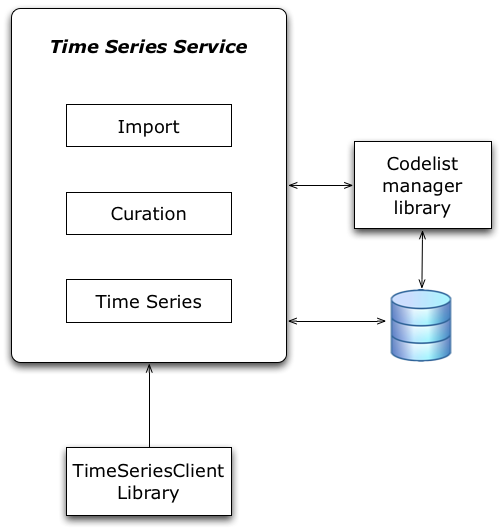Difference between revisions of "TimeSeries"
Lucio.lelii (Talk | contribs) (→Well suited Use Cases) |
m |
||
| Line 3: | Line 3: | ||
|} | |} | ||
| − | + | TimeSeries offers facilities supporting the management of the entire life-cycle (creation, curation, manipulation and publication) of datasets representing time series, i.e. tabular data representing observations of a given event or phenomenon at different time intervals. | |
| + | Time series are used in many domains ranging from statistics to signal processing and econometrics. | ||
| + | |||
| + | TimeSeries offers a rich set of facilities ranging from those supporting the assessment of data correctness to those supporting the verification of the compliance of data with given code lists, the aggregation and filtering of data. | ||
| + | |||
This document outlines the design rationale, key features, and high-level architecture, as well as the options deployment. | This document outlines the design rationale, key features, and high-level architecture, as well as the options deployment. | ||
| Line 11: | Line 15: | ||
The service is able to import data using different protocols. | The service is able to import data using different protocols. | ||
| + | |||
| + | === Key features === | ||
| + | |||
| + | <font color=red>TO BE COMPLETE</font> | ||
== Design == | == Design == | ||
| Line 16: | Line 24: | ||
=== Philosophy === | === Philosophy === | ||
| − | This represents an endpoint for users who want to process time series in order to extract | + | This represents an endpoint for users who want to process time series in order to extract information. |
=== Architecture === | === Architecture === | ||
| Line 42: | Line 50: | ||
=== Well suited Use Cases === | === Well suited Use Cases === | ||
| − | The Service is particularly suited to support processing on large dataset of | + | The Service is particularly suited to support processing on large dataset of time series and to collect statistics on such data. |
== Subsystems == | == Subsystems == | ||
Revision as of 20:24, 18 May 2012
TimeSeries offers facilities supporting the management of the entire life-cycle (creation, curation, manipulation and publication) of datasets representing time series, i.e. tabular data representing observations of a given event or phenomenon at different time intervals. Time series are used in many domains ranging from statistics to signal processing and econometrics.
TimeSeries offers a rich set of facilities ranging from those supporting the assessment of data correctness to those supporting the verification of the compliance of data with given code lists, the aggregation and filtering of data.
This document outlines the design rationale, key features, and high-level architecture, as well as the options deployment.
Overview
The goal of this service is to offer a single entry for processing, assessing and harmonizing time series.
The service is able to import data using different protocols.
Key features
TO BE COMPLETE
Design
Philosophy
This represents an endpoint for users who want to process time series in order to extract information.
Architecture
The subsystem comprises the following components:
- TimeSeries service: the service core;
- TimeSeries client library: a library to connect to the service.
A diagram of the relationships between these components is reported in the following figure:
Deployment
All the components of the service must be deployed together in a single node. This subsystem can be replicated on multiple hosts and scopes, this does not guarantee a performance improvement because this is associated to the requests which are made towards the database.
Small deployment
The deployment follows the schema of the Architecture
Use Cases
Well suited Use Cases
The Service is particularly suited to support processing on large dataset of time series and to collect statistics on such data.
